Technical guide for rubber hoses
Rubber hoses selection
Rubber hoses selection
The function of a hose is to convey different solid, liquid or gaseous products either by suction or by discharge.
The large range of tecalemit rcmh flexible hoses responds to many diverse applications as these are designed in a different way according to their use.
For the choice of an industrial hose, the user or prescriber should take a certain number of elements into consideration.
Hose structure :
A hose is comprised of 3 elements :
- the inner tube ensuring tightness is made from homogenous polymer presenting excellent resistance to the conveyed product. iI must have the best possible surface finish.
- the reinforcement gives the hose its physical and mechanical properties : resistance to both positive and negative pressure, resistance to kinking, traction; this reinforcement can combine several technical solutions to adapt to conditions of use : metal or textile braids or plies, metal or plastic spirals, cable plies, electrical conductors.
It also guarantees the dimensional stability of the inner tube thereby contributing to tightness of the hose.
- the outer cover is made from homogenous polymer and intended to isolate the reinforcing structure from the environment.
Nature of conveyed products :
These are extremely varied and have been classified into 7 main families :
- Water (part N°s beginning with 1)
- Air and gasses (part N°s beginning with 2)
- Hydrocarbons (part N°s beginning with 4)
- Steam (part N°s beginning with 5)
- Chemical products (part N°s beginning with 6)
- Abrasive products (part N°s beginning with 7)
- Liquid food products (part N°s beginning with 8
(hoses intended for use with hydraulic oils can be found in the tecalemit flexibles hose catalogue)
Environment :
- Safety of operators
- Protection of the environment
- Ambiant temperature
- Atmospheric conditions
- Possibility of impacts or abrasion
- Presence of corrosive products
State of conveyed product :
Liquid, gaseous, solid or mixture of same
Working method :
By suction, under pressure or by gravity
Working conditions :
Pressure and temperature of fluid, pressure surges, pressure peaks, frequency of use
Characteristics of use :
Flexibility and ease of handling are considered and also :
- Imposed bend radius
- Vibrations of the system
- Applied traction
- Flexions
- Acceptable connections
Standards and regulatory constraints :
These particularly concern the food quality of inner tubes, rules relative to the transport of dangerous products, safety factors between pressure and burst pressures.
Inner diameter of hose (mm) :
The inner hose diameter is without doubt the first citerion of choice.
Choosing too small a diameter provokes important pressure losses and an increase in fluid velocity detrimental to hose service life in the case of abrasive products.
Choosing too large a diameter gives way to a needless increase in weight, size and cost of the installation and a reduction in ease of handling.
This diameter can depend only on the type of end-connection used, variable according to the application. this diameter is often used to designate the hose.
Outer diameter (mm) :
The outer diameter of the hose indicates its outer size. it is also necessary to know it in order to select mounting devices and certain types of fittings.
Working pressure :
Expressed in bars by the abbreviations PS (pression de service - working pressure), PMS (pression maximale de service - maximum working pressure), PMO (pression maximale d’utilisation - maximum service pressure), WP (working pressure), PMA (pression maximale admissible - maximum admissible pressure).
Tecalemit rcmh hoses are designed and manufactured for continuous service at the working pressure indicated on each data sheet.
Test pressure :
Expressed in bars by the abbreviations PE (pression d’épreuve - test pressure) or TP (test pressure) the test pressure is very variable according to requirements of the applicable standards or those of the customer.
gGenerally it is obtained by multiplying the working pressure by a safety factor (1.5 or 2 for example).
Burst pressure :
Expressed in bars by the abbreviations PLNE (pression limite de non-éclatement - pressure limit before bursting) or BP (burst pressure.
The values indicated in TECALEMIT RCMH® data sheets are those of the limit before bursting.
They are guaranteed for hoses before use and having been equipped with end-fittings in the preceeding month.
Working temperatures :
The temperatures specified in tecalemit rcmh data sheets are the maximum admissible temperatures of the hose for the fluid for which the hose is designed. please consult our technical department for the use of the hose with any other fluids.
Hoses may be used in different ambiant temperatures after having been priorly fitted with a heat-resistant sheath, without which the hose outer cover would rapidly age, harden and become brittle.
Bend radius :
Expressed in millimeters, minimum bend radii are indicated by measuring at hose centre line, at maximum working pressure and without hose flexion.
In the case of a hose without internal metal spiral, it defines the radius at which the hose may be rolled with a reduction of 15% of its internal section.
Resistance to traction :
Any traction on a hose must be exerted in the centre line of the end-fittings.
Only metal reinforced hoses can reasonable support any off centre-line tractions.
Tractions on suction hoses with metal spiral (helix) must be avoided.
They reduce working pressure and the internal section of the hose.
Resistance to vacuum :
All our suction hoses have maximum resistance to vacuum.
Kinking or crushing are particularly detrimental to the resistance of hoses to negative pressure.
Length :
It is defined by the working length between connections, the length from fitting joint to fitting joint and the overall length from one end-fitting to the other.
Torsion :
Torsions must absolutely be avoided.
They give way to a rapid deterioration of hoses.
Products or fluids conveyed :
It must be ascertained that the fluid conveyed is compatible with the hose inner tube material, taking into account its concentration and temperature.
Please consult the chemical compatibility chart at the end of this catalogue or contact our technical department.
Electrical conductivity :
Hoses may, or may not, be comprised of conductive mixtures.
Resistances per metre of the inner tube and of the outer cover must be taken into consideration, as well as that between the inner tube and the outer cover.
Moreover, copper braids or small cables may be spirally embedded into the hose wall to ensure electrical conductivity.
For difficult cases and for ease of use, hoses may have the braids overhanging the hose ends by a few centimeters.
External conditions :
Environmental conditions of where the hose is to be used should be taken into account in order to protect it from high temperatures, abrasion, contact with detergents or oils.
The latter generate swelling of the rubber comprising the outer cover, reducing its properties.
Hoses may be used in different ambiant temperatures after having been priorly fitted with a heat-resistant sheath, without which the hose outer cover would rapidly age, harden and become brittle.
Use & maintenance
Use & maintenance
During use a hose can be subjected to many effects which have not been forseeen.
Obviously it is recommended to use the hose in accordance with our indications concerning working pressure, temperature, bend radius.
In case of doubt, please contact our technical department.
Handling :
Hoses should be handled with precaution, they should not be dragged over sharp or abrasive surfaces, tied in knots, trampled or flattened by vehicles.
Products conveyed :
It is preferable to consult our techical department for any use other than for which it has been designed.
Even so, a chemical compatibility chart according to the different types of elastomers comprising the hose inner tubes of our range can be found at the end of this catalogue.
Torsion :
Should the relative movement of the hose give way to a torsion, the end-fittings and/or connections should be modified in such a way as to give flexion rather than torsion.
Resistance to traction :
It is advised to consult our technical department for any traction effects to which the hose may be subject, as we are in a position to carry out traction tests.
Maintenance :
Once per year, hoses should undergo visual inspection after cleaning with soapy water or tensioactive-product based detergents.
The hose must be rejected should any of the following defects be revealed :
- traces of leaks
- ripped or torn outer cover
- slipping of end-fitting
- abrasion or slash revealing the reinforcement structure
Hoses used with steam :
Should the use be intermittent, that is used alternatively with steam and water following periods of cooling for example, the innner tube is subjected to thermal shocks leading to the phenomena of “pop-corning”, characterised by localised swelling.
In effect, the steam conveyed through the tube passes through the tube wall (it is for this reason that our hoses have their outer covers micro-perforated to eliminate the build-up of gasses and avoid swellings).
When the steam circulation is interrupted or during the cooling phase, the steam condenses through the inner tube wall.
When the temperature increases, this water then vaporises again with an increase in pressure.
The alternating effects of these thermal shocks creating localised swellings, deteriorate the inner tube.
In all cases, the hose should be maintained in such a position as to prevent water from stagnating during halts.
Hoses intended for food products :
Users must apply necessary rules concerning cleaning operations (usually with steam) and their frequency.
Hoses intended for abrasive products :
Abrasive products remove only a small part of the inner tube material in straight sections.
Consequently, abrasive product handling hoses should be maintained as straight as possible. in situations where bends cannot be avoided, theses should have a radius as large as possible.
Small radii give way to localised wear. It is the same for sections reduced by an external force, where the abrasive product is accelerated.
It is also necessary to ensure good electrical conductivity in order to evacuate static electrical charges produced by the rubbing of particles against the inner tube, otherwise leading to a perforation of the tube wall.
Hoses for corrosive or aggressive products :
It is obviously necessary to consult the chemical compatibility chart at the end of this catalogue, taking into account temperature and concentration.
In case of doubt, contact the technical department.
It is preferable to avoid stagnation of the product in the hose, particularly with regards to solutions or emulsions as decantation can lead to concentrations above the admissible limits.
Hoses for inflammable products :
This particularly concerns liquid hydrocarbons, liquids or gases. road transport rules impose a monitoring sheet, which must be furnished by the manufacturer, with annual inspections and replacement after 6 years.
Storage
Storage conditions
Over a long period of storage, and particularly when they are subjected to certain factors described hereinafter, physical properties of hoses are modified in such a way as to lose their initial characteristics.
The correct storage conditions ensure maximum protection and reduce deterioration of polymers.
Duration of storage :
- Up to 3 years : use without restrictions
- From 3 to 6 years : make visual inspection. take samples and carry out hydrostatic test at twice working pressure
- From 6 to 8 years : complete visual inspection. take sapmles and carry out destructive tests
- Over 8 years : do not use
All tecalemit rcmh hoses are marked with a date or number indicating date of production and date of placing into stock.
Temperature :
The ideal storage temperature is 15°C and the acceptable range is from 0°C to +35°C.
Hoses must not therefore be placed near a source of heat. In all cases, stored hoses should not be subjected to temperatures over +50°C or under -30°C.
Moreover, large fluctuations in temperature during storage lead to premature ageing of hoses.
cracking caused by ozone increases with temperature.
Humidity :
It is recommended to avoid relative humidity above 65%.
Ultraviolet light :
Direct light is one of the main sources of ageing.
In all cases, it is necessary to keep articles away from sunlight or strong artificial lighting.
Should the storage area have large bay windows, these should be covered with red, orange or white coating, or the items should be packed in an opaque wrapping.
Ozone :
Ozone is an ageing factor which must be taken into account.
It is therefore necessary that storage areas are exempt of ozone generating equipment such as mercury vapour lamps or spark-producing equipment such as alternative current electrical motors.
Also, the circulation of air around and inside the hoses should be limited, for example, by keeping the, original packing and plugging hose ends.
Environment :
Hoses should also be kept away from workshop areas where they could be exposed to projections of oil, solvents, detergents or rodents.
Bend radius in storage :
Ozone is a major factor of aging which creates cracking in the rubber.
When the hose is curved, the tension exerted on the outer cover has a tendency to enlarge them. consequently, the smaller the bend radius, the more likely it is that cracking will appear.
Method of storage :
The principal to follow is to store hose in straight lengths, layed flat on supports, with should the hose be stored in reels, it is preferable to avoid stacking them in piles, as this could create a permanent deformation of the hose.
Hoses should not be suspended on hooks and in general any flexions or tractions should be avoided.
Implementation
Implementation
Tecalemit’s industrial rubber hoses are either manufactured by spiral wrapping, consisting of adding the successive components of the hose on a metal mandrel, or continuously by extrusion and braiding the textile reinforcement.
Manufacture on automated mandrels :
Ce type de fabrication nécessite des halls de fabrication équipés de ponts roulants d’une portée de 200 mètres.
This type of manufacturing requires factories equipped with overhead traveling cranes with a range of 200 meters.
The metal mandrel of maximum 61 m is towed inside a machine which has rotating reels used to lay the constituent elements of the pipe: Rubber strips laid in a helical manner, strips of textile or steel wires, metal spirals, transfer band bearing the Tecalemit Flexibles by Sel brand, polyethylene strip for marking the inlaid batch numbers, and finally the strips of finishing fabric which will hold the constituent elements of the pipe.
This reels turn in both directions.
The mandrel is then inserted into a 60 meter long autoclave oven for vulcanisation.
When it is removed from the oven, the finishing fabric strip is removed and the hose is removed from the mandrel.
This manufacturing process can be used with metal wire or textile thread braiding.
It also allows the association of one or several metal spirals with textile strips.
The minimum manufacturing batch is 10 mandrels. The maximum inside diameter is 152.4 mm.
Manufactured on manual and semi-automated mandrels :
The operator stands on a cart, the advance of which is controlled by the rotation of the metal mandrel.
The operator lays the various strips of rubber, the textile wire layers, the metal spirals, the commercial marking and the traceability bands and the strips of finishing fabric on a metal cylinder.
This covered cylinder is then inserted in an autoclave oven.
This manufacturing technique allows for a great flexibility in the use of the various constituent elements of the hose.
The making can be done with a transfer band, incrusted, or both.
The maximum inside diameter is 508 mm.
Manufacture on flexible mandrels :
This manufacturing technique allows pipes with one or several textile or metal braids to be made.
The mandrels are made of polyethylene with an internal steel wire.
The marking is done with ink, by incrustation or by transfer band.
This technique is usually reserved for hydraulic hoses but is also used when the length of the requested hoses is greater than 61 meters.
The maximum diameter is 31.8 mm.
Continuous manufacturing :
This manufacturing technique can be used to extrude pipes with a diameter of up to 25 mm with a smooth surface (unlike pipes manufactured on mandrels which have a striped appearance following their vulcanisation under a strip of fabric in the autoclave).
The internal tube is extruded and immediately braided and covered in rubber with a square head extruder.
The marking is done with ink or incrusted.
The pipe is then rolled onto a revolving plate that is inserted into an autoclave oven underground.
List of the diameters of our rigid mandrels :
The quantity of available mandrels in January was around 2,800.
- 61 meters mandrels for diametres (in mm): 10, 12, 12.7, 15.8, 17, 19.1 , 20, 22, 25.4, 26, 28, 30, 31.8, 35, 38, 40, 42, 44.5, 48, 50, 50.8, 53, 54, 55, 57, 60, 63.5, 65, 70, 73, 75, 76.2, 80, 83, 90, 95, 100, 101.6, 110, 114.5, 120, 127, 152.4
- Mandrels of other lengths for the diameters (in mm): 14, 15, 18, 24, 25, 25.6, 68, 85, 92, 105, 130, 133, 140, 146, 150, 162, 168, 175, 180, 190, 203, 219, 230, 245, 254, 273, 298, 304.8, 323, 336, 355.6, 390, 406.4, 445, 457, 508.
- Stainless steel mandrels to manufacture food-grade hoses (mm) : 15, 15.8, 19.1, 25.4, 31.8, 38.1, 40, 44.5, 50.8, 60, 63.5, 70, 75, 76.2, 80, 90, 101.6, 110, 114.5, 168, 203.
Standard dimensional tolerances on the inside diameter of rubber hoses manufactured on mandrels :
Inside diametre in mm
Dimensional tolerances for pipes manufactured on a rigid mandrel, in mm
Manufacture on flexible mandrels 3.2 +/- 0.3 +0.50/-0.30 From 4 to 10 +/- 0.4 +0.60/-0.40 From 12 to 16 +/- 0.6 +0.70/-0.50 From 19 to 20 +/- 0.8 +0.90/-0.70 25 +/- 1.0 +0.90/-0.70 From 30 to 40 +/- 1.20 +1.20/-0.80 From 50 to 65 +/- 1.40 From 70 to 90 +/- 1.60 From 100 to 125 +/- 1.60 From 150 +/- 2.0 to 200 +/- 2.5 From 250 to 400 +/- 3.00
Manufacture of hoses fitted with connectors :
Modern equipment makes it possible to carry out the various operations required for the preparation of the finished product: Cutting, boring, stripping, handling, crimping, proofing and marking.
The metal connectors and crimping skirts are produced in-house as per RCMH drawings.
A traction bench, a cyclic pulse pressure bench of 1000 bars, 150 ° C fire test and hydrostatic test of 22 meters are used to check the reliability of the assemblies.
Chemical compatibility chart
Chemical compatibility chart
The indications in this chart are according to NFT 40-106 but given without guarantee.
They present the classes of chemical or physical alterations of the elastomers with the chemical products (physical penetration, hydrolysis, oxydation, specific effects, etc...)
they do present the effects of the elastomer on the chemical product concerned.
Elastomeres used :
ASTM : common name
NR : natural rubber - natural isoprene
BR : butadiene
SBR : styrene butadiene rubber - buna-s
IIR : butyl - isobutylene-isoprene rubber
CIIR : chlorobutyl - chlorinated isobutylene-isoprene
EPDM : pdm - ethylene-propylene-diene rubber
EPM : epr - ethylene-propylene copolymer
NBR : nitrile - acrylonitrile butadiene - buna-n
CR : neoprene - chloroprene rubber
CSM : hypalon - chlorosulfonated polyethylene
AU : polyurethane - polyesterurethane rubber
T : thiol - polysulfide rubber
Q : (quartz) - rubbers containing silicon
FKM : viton - fpm - fluorocarbon rubber
ACM : polyacrylic - polyacrylate rubber
EACM : ethyleneacrylate rubber - vamac
MFQ : fluorsilicone rubber - plysiloxane
ECO : epichlorhydrine compolymer rubber
CO : epichlorohydrine homopolymer rubber
GPO : propylene polyxide rubber
CM : cpe - chlorinated polyethylene rubber
EVM : vinyl ethylene-acetate rubber
Download the technical guide for rubber hoses:

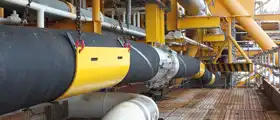
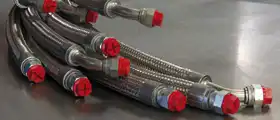
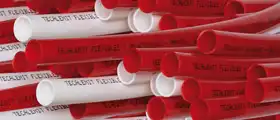
 Department specialized in manufacturing high-quality industrial hoses for fluid transfer.
Department specialized in manufacturing high-quality industrial hoses for fluid transfer. Specialist in the manufacturing of hydraulic hoses, extrusion of pneumatic tubes, and production of thermoplastic preforms.
Specialist in the manufacturing of hydraulic hoses, extrusion of pneumatic tubes, and production of thermoplastic preforms. Wide selection of industrial and hydraulic hoses and fittings in the Paris region.
Wide selection of industrial and hydraulic hoses and fittings in the Paris region. Machining of fittings for industrial and hydraulic hoses, crimped ferrules, and stainless steel corrugated hoses.
Machining of fittings for industrial and hydraulic hoses, crimped ferrules, and stainless steel corrugated hoses. 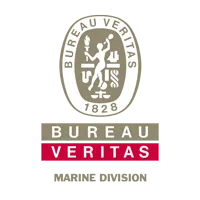
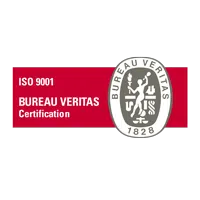
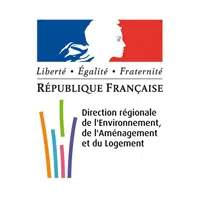
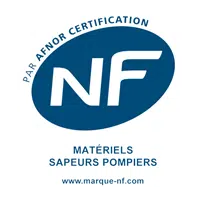
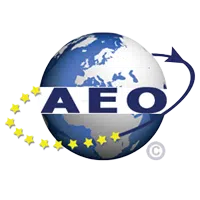
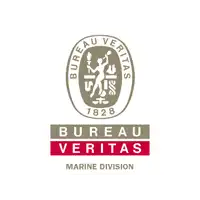 Type approval certificates for hydraulic hoses
Type approval certificates for hydraulic hoses Development of the company and its infrastructures
Development of the company and its infrastructures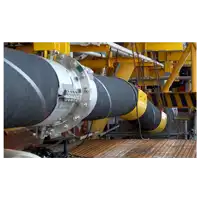 Tecalemit Flexibles strengthens its presence in the energy sector
Tecalemit Flexibles strengthens its presence in the energy sector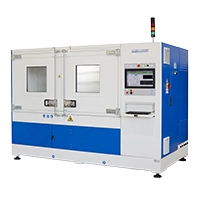 A pulse bench with exceptional capabilities
A pulse bench with exceptional capabilities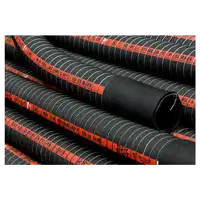 Hose type approvals for the transport of hazardous materials
Hose type approvals for the transport of hazardous materials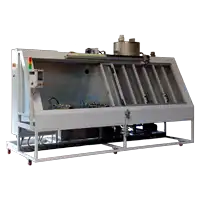 A depollution bench of our design
A depollution bench of our design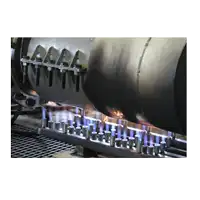 BV type certification for fire resistant hoses
BV type certification for fire resistant hoses DE
DE  ES
ES  EN
EN  FR
FR